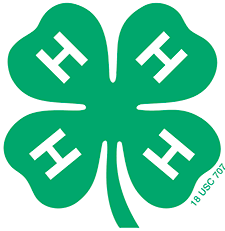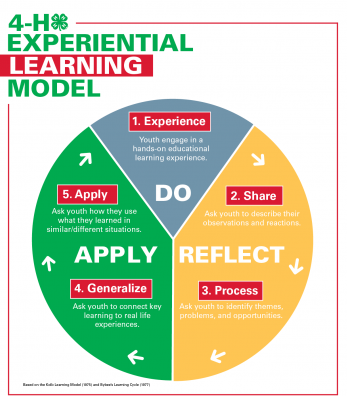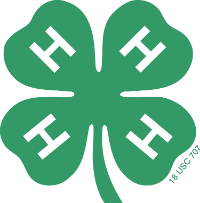4-H Volunteer Orientation
4-H Structure
Montana 4-H is a partnership between Montana State University, Montana State University Extension, the United States Department of Agriculture and county governments.
4-H is active in all fifty states and many countries throughout the world. 4-H members are involved in several ways:
- Community clubs
- Special interest groups
- School enrichment programs
- Summer, overnight or day camps
- Afterschool programs
- 4-H utilizes volunteers to expand the total youth development
MSU Extension Mission
Montana State University Extension is an educational resource dedicated to improving the quality of people's lives by providing research-based knowledge to strengthen the social, economic and environmental well-being of families, communities and agriculture enterprises.
Montana 4-H Mission
To educate youth and adults for living in a global and ever-changing world by using the resources of the Land Grant Universities and the U.S. Department of Agriculture.
In 4-H, we believe in the power of young people. We see that every child has valuable strengths and real influence to improve the world around us. We are America’s largest youth development organization—empowering nearly six million young people across the U.S. with the skills to lead for a lifetime.
4-H Guiding Principles
- Montana 4-H focuses on Positive Youth Development while teaching leadership, citizenship and life skills.
- 4-H is a family-centered program
- 4-H program focus is determined locally to fit the specific needs of youth.
- 4-H provides programs that appeal to a diverse audiance.
4-H Name and Emblem
 The 4-H clover is the official emblem and the most widely recognized symbol of the
program. It protected by Congress under federal statute 18 USC 707. As 4-H volunteers
you are responsible for upholding the 4-H name and emblem guidelines and protection
policies.
The 4-H clover is the official emblem and the most widely recognized symbol of the
program. It protected by Congress under federal statute 18 USC 707. As 4-H volunteers
you are responsible for upholding the 4-H name and emblem guidelines and protection
policies.
4-H Pledge
I pledge:
My Head to clearer thinking, My Heart to greater loyalty,
My Hands to larger service, and My Health to better living,
For my club, my community, My country and my world.
4-H Motto & Brand Promise
“To Make the Best Better”
4-H empowers kids with the skills to lead for a lifetime.
4-H Colors
Green and white are the 4-H colors. Green symbolizes springtime, life and youth. White stands for high ideals. Visit the 4-H Brand page for specific graphics and color palette details.
4-H Membership
Youth ages 8-19 may enroll as a 4-H Member. Youth ages 5-8 may enroll in the Cloverbud Project. Participation in Montana 4-H and its programs is open to all interested youth regardless of race, color, national origin, sex, sexual preference, religion, creed, political belief, marital or parental status or disability. There are over 20,000 youth enrolled in Montana 4-H. Visit the 4-H age gudelines page for specifics on enrollment ages.
Extension Agent’s Role
- Planning – Program development
- Organizing – Resource development and coordination of program.
- Staffing – Recruit, train and advise volunteers.
- Supervising – Support, motivate and recognize volunteers.
- Evaluating – Access needs, evaluate program and communicate
Volunteer’s Role
4-H is a non-formal educational program delivered by volunteers trained and supervised by Extension Agents. Volunteers may work in various capacities through the guidance of Extension Faculty and staff.
Volunteers are responsible for a group, activity or event and its members and adults as assigned by Extension Faculty or Staff. Visit the volunteer and adult role page for more description.
Experiential Learning Model

Retreived from Iowa State Extension and Outreach
Montana 4-H engages youth in events, activities, programs, meetings and projects through “learn by doing” hands-on activities. Montana 4-H utilizes the experiential learning model to facilitate youth engagement in learning and life skill development. The model contains three basic stages:
- Do - Youth participate in an activity, meeting or program
- Reflect - Youth think about the experience and what was
- Apply - Youth draw conclusions and apply what they learned
Review the NIFA factsheet on using the experiential learning model.
Experiential learning process questions you can use when planning 4-H activities.
4-H Essential Elements
- A positive relationship with a caring adult.
- A safe environment
- An inclusive enviornment
- Engagement in learning
- Opportunity for mastery
- Opportunity to see oneself as an active participant in the future
- Opportunity for self-determination
- Opportunity to value and practice service for others
Resources
store.msuextension.org for all 4-H curriculum

